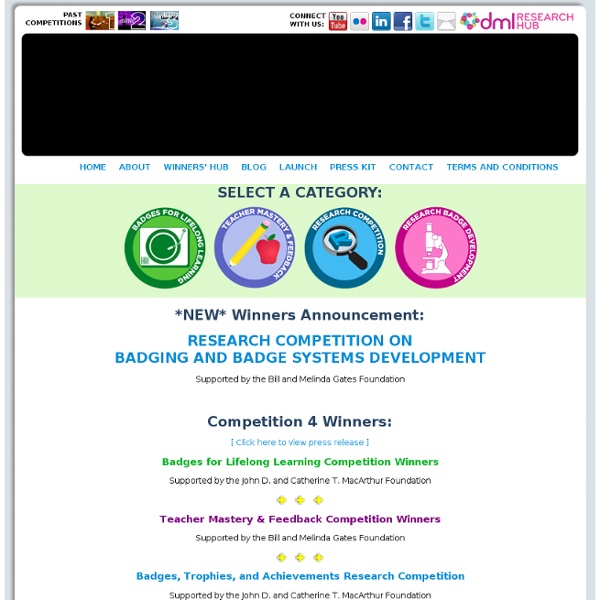Digital Media and Learning Competition
Connected Learning Connected Learning is a set of principles designed to nurture the kind of students that can thrive in the 21st century. By the time today’s first graders graduate high school, there will be whole new industries we can’t even imagine today. Connected Learning fosters the adaptive, lifelong learners that can flourish in a world of rapid technological change. More... Project:Connect - Hack for a Better Web Hackathon to create a more equitable, social, and participatory internet.
Do - interaction & media design
Update — the wallpaper is now available online from www.spamghetto.com Spamghetto is the inappropriate, intriguing, irresistible spam-based wall covering that turns the bad ideas flooding your inbox into patterns of insight into the human nature. Comically misspelled offers of love and enthusiastic advice on how to get rich, fast: most people like their spam filter to spare them such nuisances, but at ToDo they are cherished as a testimony to the humanity of our emotions, the universality of our deepest desires. Before someone finds the way to ban this blip of fun and inspiration from our everyday correspondence, ToDo has decided to give spam a new outlet with Spamghetto, a print-on-demand, “green” FSC-certified, non-woven wall covering that has won international recognition with a Silver Award at the 2010 European Design Awards.
World Wide Workshop
Augmented Stories
'Written Images' project needs your support! [Books, News] #kickstarter
Created in collaboration with more than 70 media artists and developers from across the world, Written Images is the first of its kind, a ‘programmed book’, continuously regenerated for the digital printing process, offering each reader a unique experience. The team, including Martin Fuchs and Peter Bichsel first announced their project in February 2010. Since then, more than 70 image generating software programs were submitted. A jury, including myself, singled out the 42 most creative and successful submissions to be included in the book. Now, with your support the team hopes to produce the first edition of this unique book and also introduce the “Written Images” print-on-demand service. About: Digital technologies are successful tools in contemporary design. UPDATE 01/03/2011: Video of the image rendering queue program added below, 100xfaster. Very small selection of images: Written Images Website:
Related:
Related:



